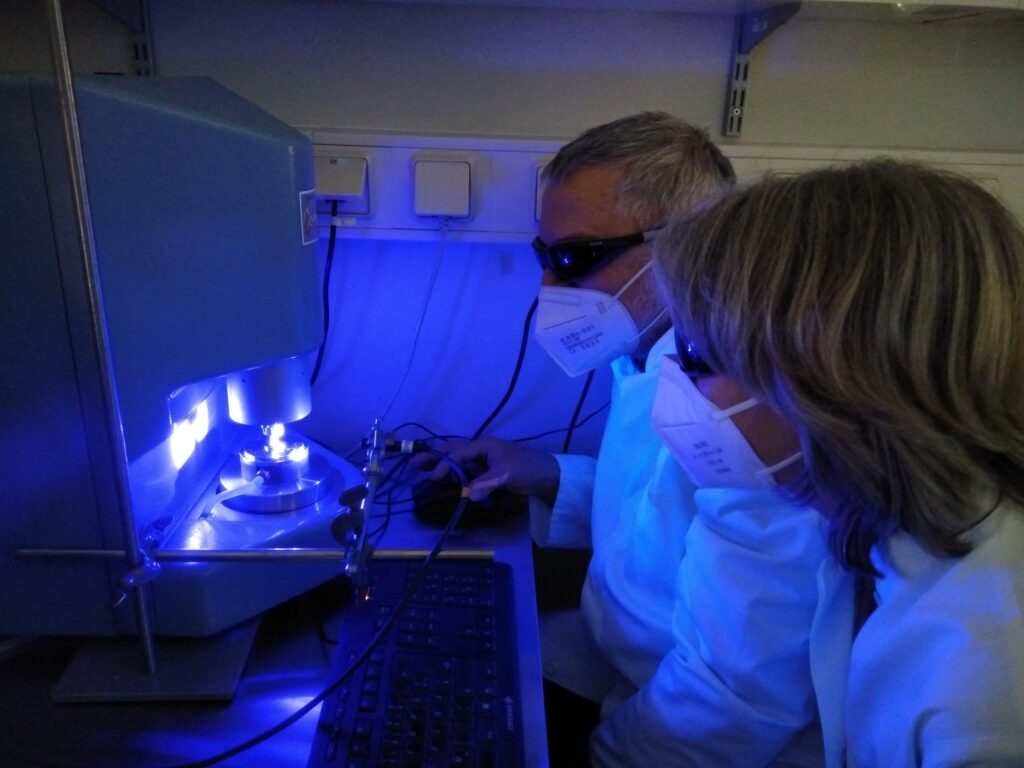Brighter is a European Project that brings together different academic and industrial partners to develop a new 3D bioprinting technology able to produce human tissues at high speed and with high spatial resolution. This innovative technology is based on light-sheet lithography and an original top-down approach.
Brigitte Angres and Helmut Wurst are co-founders of the company Cellendes, a privately-owned biotechnology company founded in 2009 as a spinoff of the NMI Natural and Medical Sciences Institute at the University of Tübingen (NMI). Cellendes fuses its expertise in chemical, biochemical and molecular biology assays to develop biomimetic hydrogel systems for three-dimensional cell culture. Its hydrogel technology comprises synthetic or non-animal derived defined components that enables the personalized and adaptable design of extracellular environments for 3-D cell culture. Get to know more about Helmut and Brigitte in the interview below. Enjoy it!

Can you describe yourselves in a couple of lines?
Helmut:
My name is Helmut Wurst. I am a German biologist with a Ph. D. degree from the University of Constance in Germany, where I was focussing on DNA cloning, sequencing and mutagenesis techniques. Later I went to Stanford University in Palo Alto, USA, working on the metabolism and enzymology of inorganic polyphosphate in E. coli and yeast. From Stanford I took the step from Academia to the Biotech industry by joining Clontech Laboratories (later Becton Dickinson Co.) where I became a Group Leader responsible for RT-PCR and antibody product developments. In 2005 I started to work on biomimetic hydrogels for three-dimensional cell culture, first as a project leader at the Natural and Medical Sciences Institute Reutlingen and later at Cellendes GmbH, which I serve as a co-founder and Executive Manager.
Brigitte:
I am Brigitte Angres, co-founder and Executive Manager of Cellendes GmbH. I studied biology at the University of Tübingen and got my Ph.D. at the Max-Planck-Institute for Developmental Biology where I studied the role of cell-cell adhesion in early development of Xenopus laevis. In 1991 I continued to investigate cell adhesion mechanisms in Prof. Dr. Nelson’s group at Stanford University as a postdoc for four years. After two years of assistant professorship at the Humboldt University in Berlin I wanted to give my career a change, returned to California and joined the biotech company Clontech Laboratories Inc. I led the R&D group which developed products for the green fluorescent protein and apoptosis product lines and again enjoyed life in sunny California. In 2002 I returned to Germany and became group leader at the NMI Natural and Medical Sciences Institute at the University of Tübingen. Combining my experience in academia and industry I followed my passion for cells, cell adhesion and tissue development and eventually founded, together with Helmut, our company Cellendes. Here we are realising the paradigm shift of cell culture from two to three dimensions!
What is your role/position within Brighter?
Helmut:
I am directing the development of photo-crosslinkable biomimetic hydrogels, that can be used as a material for patterning in a photolithographic bioprinting device and that can support the cultivation of various cell types found in our skin.
Brigitte:
I am performing cell culture work to test the suitability of the newly developed hydrogels for cell culture.
Could you tell us a little bit about the concrete work you’re involved in inside Brighter project?
Helmut:
We have been preparing the fabrication of biomimetic hydrogels by modifying water soluble polymers, such as dextran or hyaluronic acid, with photoreactive groups. We also designed and characterized various peptides with motifs from the natural extracellular environment of our cells. These peptides can be attached to the hydrogels and biologically interact with the cells embedded in the hydrogels.
Brigitte:
To make sure that our partners obtain hydrogel materials that are suitable for cell culture I am testing the new hydrogels for cytotoxicity, function and handling. Parameters like exposure time to short waved light, photoinitiators and radical reactions are critical for cell survival. In addition, I test the biomimetic functions like adhesion and enzymatic degradability that are important to realise tissue formation in hydrogels.
What are the expected results?
We expect that the modified polymers can form hydrogels upon irradiation with light and that cells, embedded in these gels, will not be harmed by this treatment. Furthermore, we expect that the cells can biologically interact with the hydrogel matrix, proliferate and develop in similar pathways, as if they were embedded in their own natural environment.
What is the expected impact of the work you’re doing?
With our material we enable the testing of the photolithographic patterning process in a relevant environment. We also facilitate the development of artificial skin models that ultimately can be used for in vitro testing of drugs, cosmetics and other substance, that come in contact with our skin. Eventually the hope would be to translate this technology into the health care sector providing skin for patients in need.
How do you feel about being a part of this European Project?
It is a great experience to work with excellent researchers from different countries in Europe, getting to know their work and culture they live in. Bringing together the different expertises raises one’s own work to another level that would have not be possible otherwise. Being able to work with these people, exchanging ideas, joining our efforts and going through such a developmental process brings up a common European feeling that would have hardly happened without the support of the European Commission for this project.